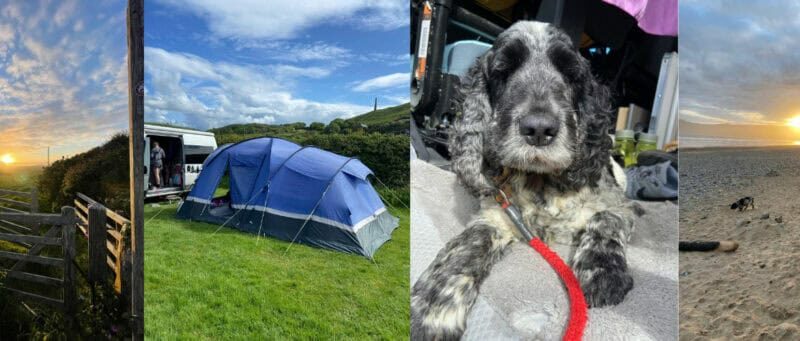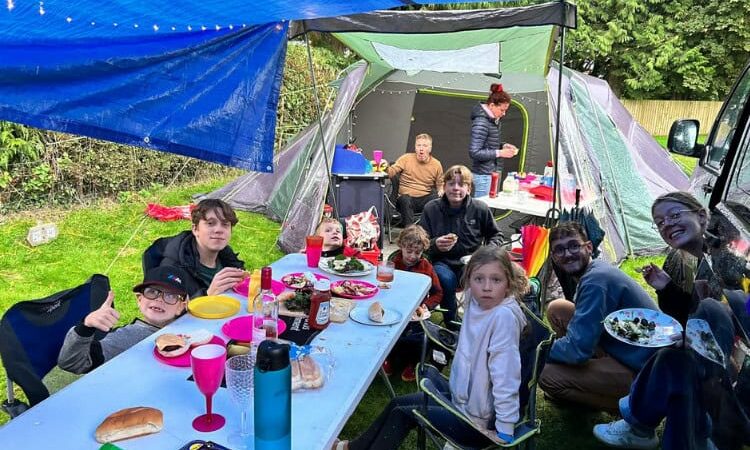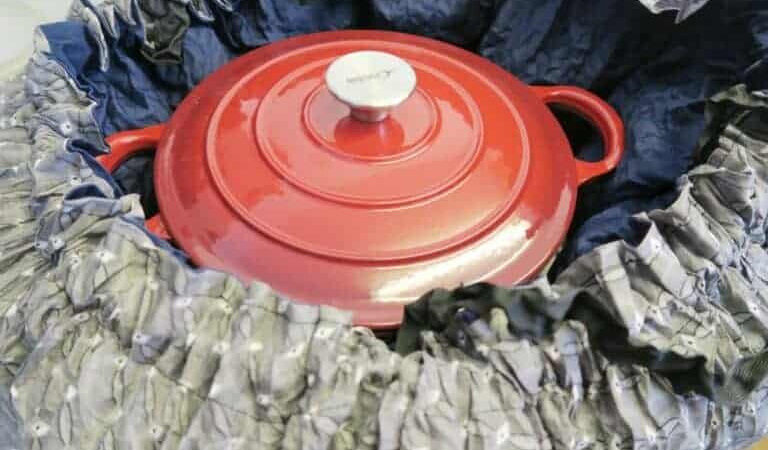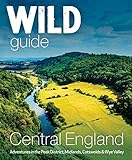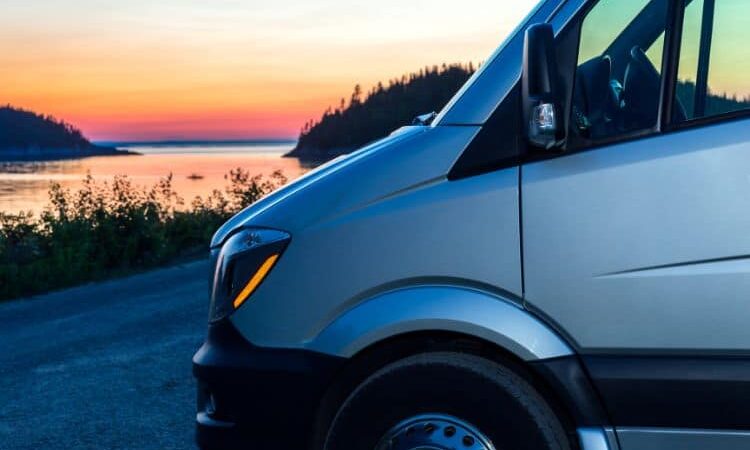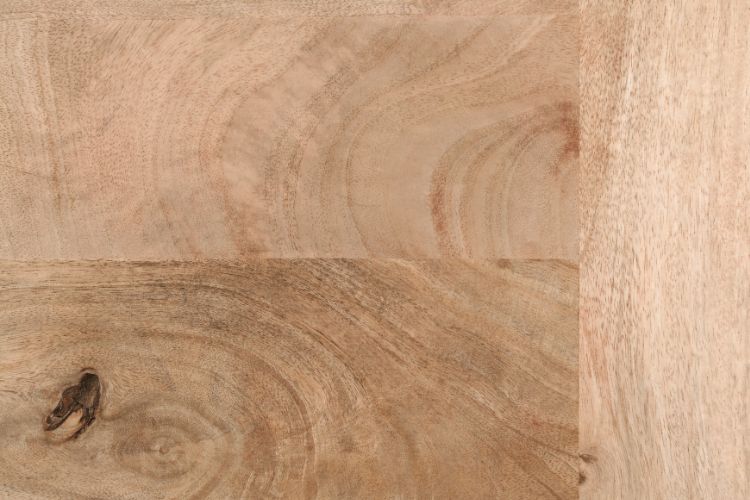Camping With A Cast Iron
When it comes to cooking, cast iron is one of the most popular choices; not just in the home kitchen but also while camping. The way the food cooks and the taste is unbeatable but a lot of people wonder how to cook with a cast iron when camping.
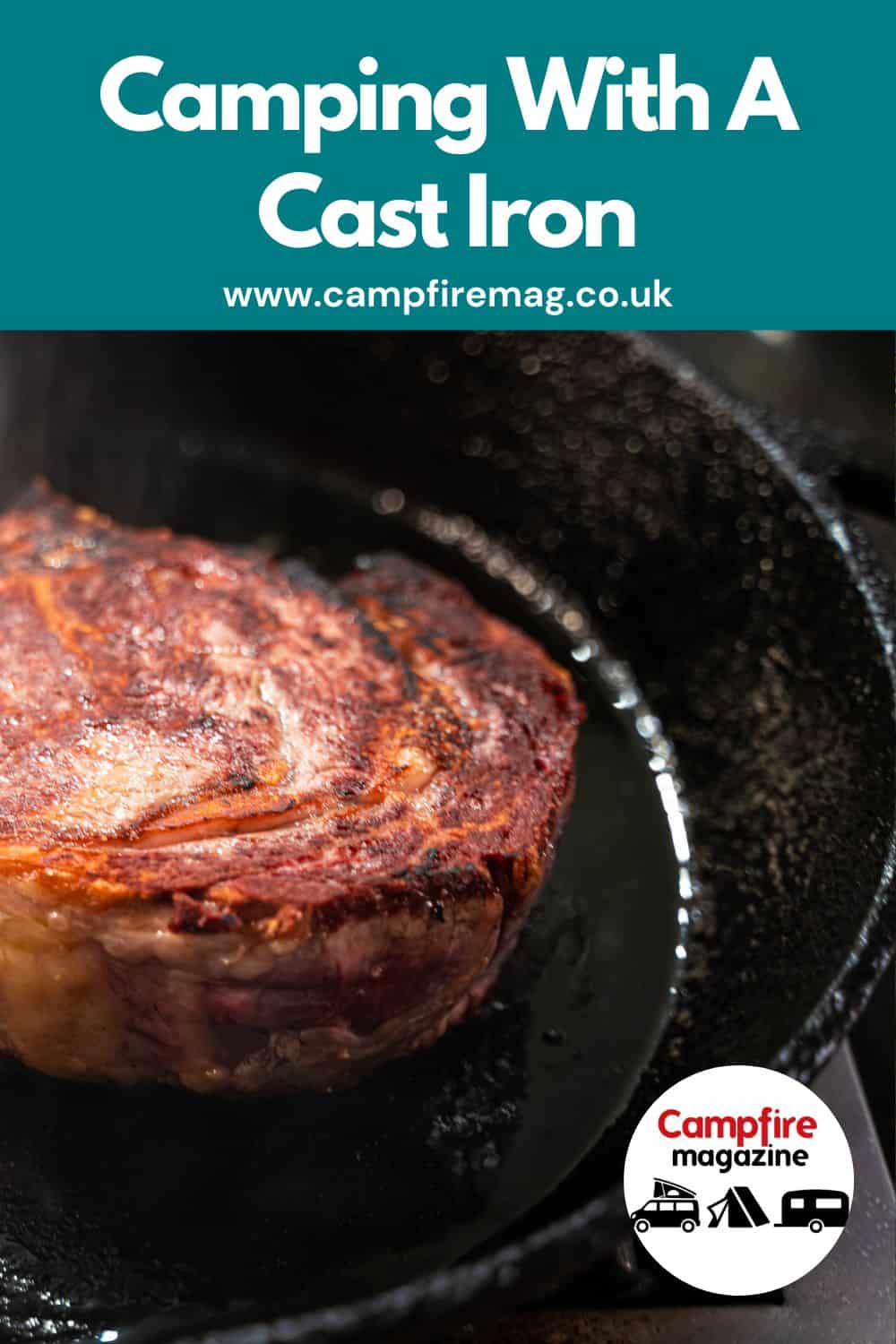
If you’re looking to up your cooking game while out in the wild then this is the guide for you. We’re going to be looking at using and caring for your cast iron cookware, how to choose the best products and why this is such an amazing option for the great outdoors.
Using A Cast Iron On A Campfire
There are a lot of questions, especially between new campers as to whether cast iron is suitable for campfire cooking. Quite simply, it is and the great thing about it is that this is such a versatile way of cooking. You have many options in how you use your cast iron (which we will cover in more detail later on) and it’s a reliable way to ensure thorough and even cooking.
Why Choose Cast Iron For Camping
As we have just mentioned, cast iron is brilliant for camping because of its durability. Use them on a camping stove, hot coals, on a griddle and in many other ways. Moreover, these pieces of cookware are incredibly well at retaining heat so you’ve got something that allows you to prepare a whole host of dishes despite not actually being in the kitchen. They’re just as good for making breakfast items like eggs and pancakes as they are for cooking a hearty stew in the evening.
We also find that cast iron makes a fantastic camping cookware choice because of how durable it is. When you’re travelling and spending time outdoors, there’s no denying that the conditions aren’t always favourable. However, using something as strong and robust as cast iron means there’s almost no chance that your equipment will be damaged.
When you are camping, you not only need something durable but also something that isn’t going to take a lot of maintenance. One of the brilliant things about cast iron is how easy it is to clean, even when you’re limited on your campsite.
WIth that said, you must keep in mind that cast iron cookware is a lot heavier than other types so it’s probably not going to be the best choice for hiking to remote sites. That is unless you want to have a real workout!
Choosing The Right Cast Iron Cooking Method For Camping
Cast iron is perfect for camping for a lot of reasons. But you must consider which is going to be the most suitable cooking method and the great news is that there are a few to choose from. In any case, you will find that cast iron provides you with an authentic cooking experience while enjoying nature.
Using A Cooking Grate
A cooking grate ensures that you have an elevated surface on which to place your cast iron during cooking. It essentially suspends it over the fire so that it doesn’t come into contact with it but uses the heat from below to cook your food.
When you head to your campsite, take a look to see if the existing fire pits have a built-in grate as this is often the case so it saves you having to take that one additional piece of equipment. Moreover, you’ll typically find that these grates can be adjusted in terms of height and having the ability to swing so you have greater control over how much heat your cast iron receives.
When it comes to using a cooking grate, you should make sure that the flames aren’t flickering through the grate. Give the fire time to calm down so that the flames are slightly underneath as this will prevent burning.
Using A Cooking Tripod
Cooking tripods are a convenient choice and are easy to use. They’re particularly good if you’re looking for something incredibly safe as they sit on three legs which improves their stability.
These tripods are normally made from either steel or iron and are designed for you to hang cast iron pots from a chain in the middle, over the fire.
Using A Grill
If you have a gas or charcoal camping grill then this is ideal for cooking with cast iron. It’s as simple as getting the grill going and popping your cookware on top. We love this for things like burgers, sausages and making a hearty cooked breakfast in the morning. The great thing about this method is that you have far greater control over the heat when compared to things like cooking directly on hot coals, for example.
Using Hot Coals
If you want to avoid having to take a whole load of extra equipment then you might consider placing your cast iron directly onto the hot coals. Just make sure not to stick it right in the middle of a blazing fire because you’ll find it impossible to control the cooking temperature.
Because you will need to wait for the fire to settle, this method requires you to start preparing well in advance. You will want to light your fire at least half an hour before you wish to start cooking as this will give it the chance to settle and get those coals nice and hot, ready for cooking.
Moreover, it’s a good idea to heat up your cast iron before you add any food as this will reduce the cooking time. Since cast iron is much denser than other metals, it’ll naturally take longer to heat up. Leaving it on the coals for ten minutes or so before cooking is the best way to approach this method.
Using Charcoal
If you want excellent heat control over your campfire cooking then we would suggest using charcoal briquettes. The great thing about this method is that these briquettes have a much longer burn time than wood so they’re ideal if you’re cooking things like stews.
On top of this, the briquettes tend to come in more even sizes so it’s a lot easier to build a fire for direct cooking. Just make sure that, when using charcoal briquettes, you have plenty of extras as you’ll find that some of them might burn away too quickly and you’ll need to add more. It’s better to have too much than not enough!
Using A Camping Stove
So many people rely on a camping stove and it’s no wonder when you think about how easy and quick they are to use. When it comes to using cast iron cookware, camping stoves are one of the best choices. If you’re looking for a method of cooking that doesn’t require a lot of effort then this is probably going to be the right choice for you. Moreover, it still allows you to cook even if your campsite does not permit actual fires.
You can get camping stoves with either one or two burners and they almost always use gas for power. Most people opt for a single burner as they’re more compact and lightweight but just make sure that the gas tank is large enough to meet your needs. That said, you can buy adapters to connect larger propane tanks should you need.
When using your cast iron cookware on a camping stove, be sure to pay close attention to how well the heat is distributed. Cast iron is amazing at retaining heat but it doesn’t always heat up 100% evenly. For this reason, make sure that you stir your food regularly.
Also remember that your cast iron cookware is going to get extremely hot when cooking on a camping stove. It’s going to get hot in any case but using this method means that the flame is concentrated in one area so things can heat up even more. Be sure to use protective gear and don’t be tempted to turn the stove up full whack. It’s better to keep the flame low. Not only will this be safer but it’ll mean that you don’t risk burning your food.
Different Types Of Cast Iron Cookware For Camping
Before we get into the nitty gritty of the different types of cast iron cookware, we’d like to point out a few things that you’ll need to think about when choosing which type is best for you.
For starters, you’re going to need to look at the available space you have in your campervan, caravan, tent or wherever you’re staying. Some cast iron cookware can be exceptionally large so make sure you select something that’s not going to get in the way. At the same time, it’s going to need to be big enough to meet your cooking needs.
As we have already mentioned, cast iron cookware is usually much heavier so you’ll want to think about how far you need to transport it on foot. If you’re parking your car right next to your tent then anything goes but if you’ve got a bit of a walk to your campsite, cast iron might not be the right option for you.
Also think about the types of food that you will be cooking. It’s not worth transporting a huge casserole pot if you only want to fry a couple of eggs in the morning.
With all of that in mind, let’s take a look at some of the different options you have in terms of types of cast iron cookware.
Casserole Pots
Cast iron casserole pots for camping come with a lid and tree legs. They also have a handle at the top which allows you to use them with a cooking tripod so they’re one of the most versatile options. If you’re cooking directly on hot coals, the legs move the pot up slightly so you can get some real heat building up underneath. Moreover, the coals won’t actually touch the pot so there’s less chance of burning your meal.
If you only take one piece of cookware on your camping trip then we would suggest that it be a casserole pot. The reason for this is that they give you the opportunity to make almost any type of food. They’re great for boiling rice and pasta as well as being ideal for steaming veggies. If you’re making stews and soups, you won’t find anything better but they’re just as suitable for cooking meat like steak and mince.
It is important to keep in mind that casserole pots designed for camping are quite different to those that are designed for use in the home kitchen. This is because of the addition of legs; your home casserole pot won’t have these. They also have a round lid that doesn’t have a rim so if you want to place coals on top, this isn’t as easy.
That said, a lot of people make do with using a regular cast iron casserole dish and use some innovative adaptations such as placing rocks underneath to act as legs. But if you are going to do this, you must make sure that the pot is not enamel coated because the flames from the campfire will damage this and you’ll end up having to invest in a new pot; and they’re not always cheap!
Skillets
One of the most commonly used types of cast iron cookware for camping is the skillet. The brilliant thing about these is that they come in so many sizes. Whether you’re camping on your own or taking the entire family, there will be a skillet in a size that suits.
Generally speaking, you’ll probably find that a ten or twelve inch skillet works best. Not only are these more portable but they’re just the right size for almost anything you want to cook. Perfect for cooking side dishes, skillets are also versatile enough to cook breakfast foods, fajitas and much more.
Griddles
Just like skillets, griddles come in an excellent range of sizes. They’re versatile enough to be used on camping stoves, grills and directly on the coals. If you want something that’s going to become your new best friend at breakfast time then a griddle is the obvious choice since they’re perfect for eggs, pancakes, bacon and other things.
That said, griddles are just as handy for other meals since they’re perfect for cooking chicken, steaks, burgers and sausages.
If you don’t want to invest in a separate griddle, you could always turn the lid of your casserole pot upside down and you’ve got a handy 2 in 1 piece of cookware!
Combo Cookers
For those that need more than one type of cast iron cookware but don’t have a lot of space, combo cookers are a brilliant choice. These cookers come with a shallow skillet and a deeper pan which can be stacked together to create a pot. This makes them ideal for almost any type of cooking but they can also be used separately, further boosting their versatility.
Caring For Your Cast Iron While Camping
Once you have chosen your new cast iron cookware, you will want to make sure that you get the most out of it. While cast iron is incredibly durable and will stand the test of time, you can further improve its lifespan by taking good care of it.
The great news is that cast iron isn’t difficult to look after and this is one of the reasons that it’s such a popular choice for camping.
One of the first things you’ll need to do to make sure your cast iron cookware serves you well is to keep it clean. Start by getting rid of any leftover food as well as sauce or oil that might be left in the pan.
Then add some water and use your regular sponge, scrubbing brush or scraper to get any stubborn or dried food off. You can purchase special cleaning equipment for cast iron pans so if you can get your hands on these then even better!
You can use soap on your cast iron cookware but we would recommend using a gentle detergent and make sure that you fully rinse everything off when you’re done. Then, it’s simply a case of drying the cast iron.
You should start by drying the item with a cloth but then it is a good idea to heat it over a low heat to ensure all moisture is removed. Cast iron is porous so moisture can get inside and if the cookware isn’t completely dry, this can cause corrosion. When you’re done, it can be useful to apply a thin layer of oil to the surface as this will protect against water in between uses.
When you have finished cooking and are ready to clean your cast iron cookware, always allow it to cool down first. If you try to pour cold water into a scalding hot cast iron pan, this can cause thermal shock and the metal may crack.
You should also make sure that you find a suitable way of storing your cast iron cookware when camping. Some products will come with a carry bag so if yours does, make sure you use it as this is designed to protect the cookware. If not then you can just as easily use something like a cloth bag or even a pillowcase.
If you are stacking several pieces of cast iron cookware on top of one another, use paper bags in between to stop them scratching each other.
Conclusion
One of the most wonderful things about camping is being able to use authentic cooking methods and enjoy dining in nature. There’s nothing quite like the taste of food cooked over the campfire but if you want the best experience then you need to choose cookware that’s going to boost this. And that’s where cast iron comes in.
With so many different types of cast iron cookware that’s perfect for camping, you’ll be able to whip up a storm. It’s important to take good care of your cast iron but you’ll find that, if you do, these cookware pieces will serve you adventure after adventure.

